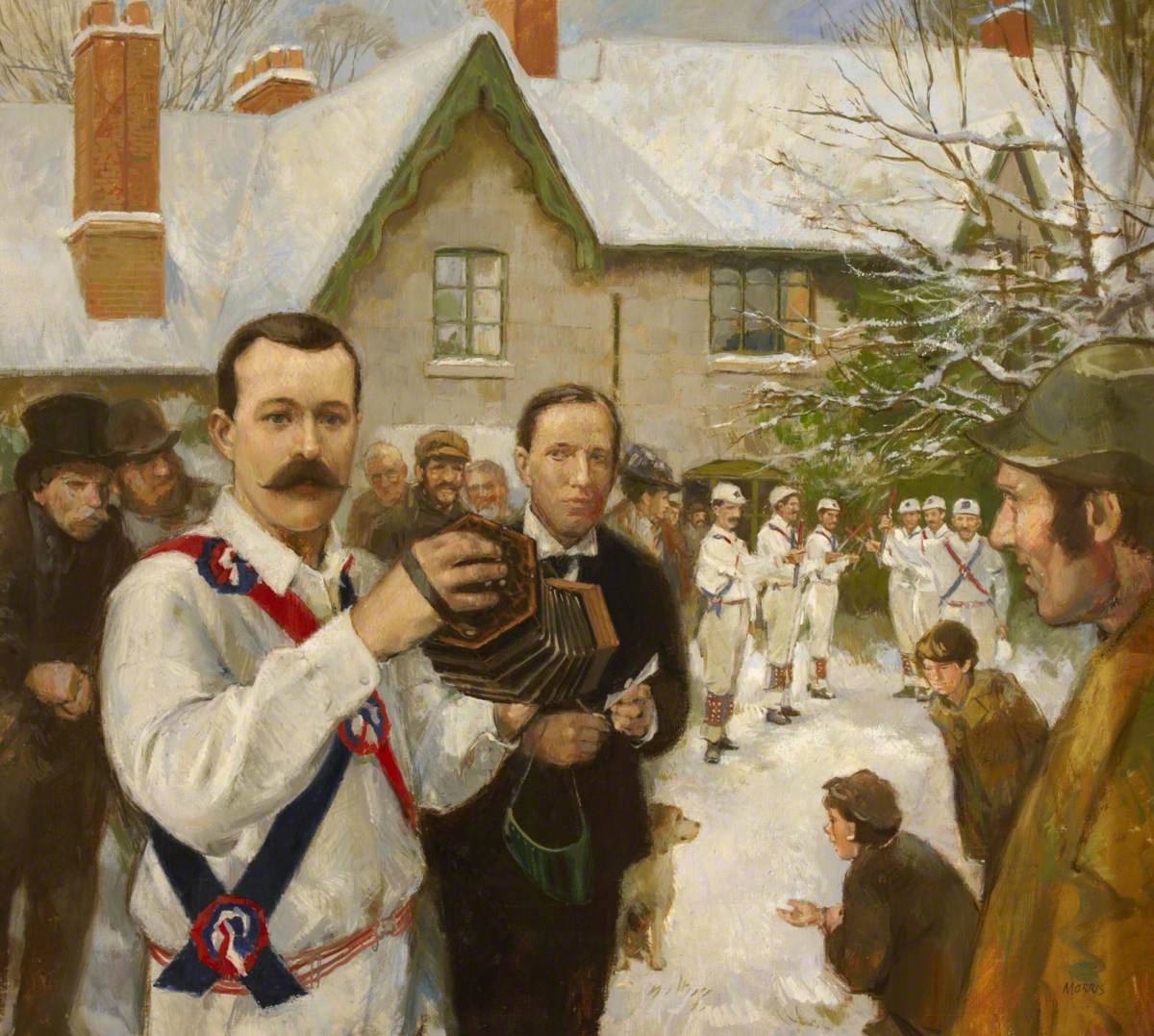On Boxing Day 1899 Cecil Sharp saw Headington Quarry Morris dancing outside Sandfield Cottage, Headington. This was his first exposure to the morris, and while it didn’t immediately kick-start the 20th century morris revival (it was several years before Sharp’s morris collecting began in earnest) it was clearly an important moment, both for Sharp, and for William Kimber, who was playing concertina for the side that day. Sharp noted down some of Kimber’s tunes and said, as they parted “we may meet again”. Well, they did indeed meet again, and Bill Kimber became very important for Sharp, helping him to understand the dances, and providing morris dance demonstrations at Sharp’s lectures.
It would be stretching things to say that the morris revival would never have happened were it not for Cecil Sharp. But his role was key, and the 1899 meeting was key. Yet it so easily might not have happened. Sharp might not have been spending that Christmas with his mother-in-law Mrs Birch in Headington. And, more fundamentally, the Quarry side might not have been dancing that day – they didn’t normally go out at Christmas, but it was a very hard winter so the men, mostly employed in the building trade and out of work because of the harsh conditions, decided to break with tradition in the hopes of earning a little extra income.
You can hear Kimber’s own account of the meeting, and why they were dancing at Sandfield Cottage that Christmas, on the Merryville website.

The Folklorist, Cecil Sharp, Meeting William Kimber in 1899. Painting by Anthony Morris. From ArtUK, courtesy of the English Folk Dance and Song Society.
In fact, regardless of the weather, the Quarry men might not have been out dancing in 1899 had it not been for Oxford antiquarian Percy Manning. The side had ceased dancing some years previously, but had been encouraged to reform by Manning; in particular, he organised a concert on 13th March 1899 (so just over 125 years ago) in the Corn Exchange, where Headington Quarry performed a selection of their morris dances, interspersed with songs and tunes sourced mostly from Chappell’s Popular Music of the Olden Time and Lucy Broadwood’s English County Songs. These – “a quaint and pleasing collection of old English ballads” – were performed by “Mr. Woodward, of Magdalen choir, Mr. Sunman, of the Cathedral choir, and Miss Taphouse”; Mr C. Taphouse of Oxford music shop fame, provided the pianoforte accompaniments (incidentally, looking at this web page on the Taphouse family, I think that the Miss Taphouse in question was probably Alice, born 1868, while the pianist was her slightly older brother Charles).
Jackson’s Oxford Journal printed a positive report of the event the following Saturday, 17th March – and helpfully provided the complete programme.
It was a real honour to play Bill Kimber’s concertina. I can confirm that
- it’s still in good nick
- it’s a lovely responsive instrument
- it’s really loud!
Having mentioning this on Facebook, Mike Heaney got the film-maker’s permission to upload a clip of me playing the concertina to YouTube, and here it is:
Many thanks to Julie Kimber-Nicholson for allowing me to play her grandfather’s box, and to John Richards for permission to share this video clip.



Last Sunday there was a commemorative event for veteran Quarry musician John Graham who died last year. Here’s the current Headington Quarry side dancing Laudanum Bunches at that event.